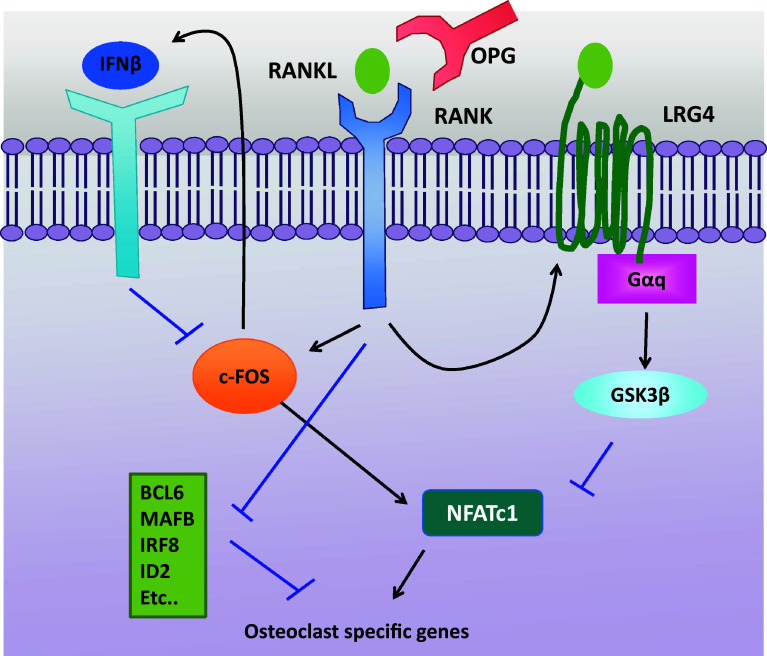Fig. 2.
Negative-feedback regulation of osteoclastogenesis. Osteoclastogenesis is regulated in multiple levels. OPG is a soluble decoy receptor for RANKL and competes with RANK for binding RANKL. The RANK/RANKL/OPG system has an essential regulatory role in osteoclast biology. LRG4 is a new receptor for RANKL and maintains the balance of RANKL-mediated activation by competing with RANK and suppressing the activation of NFATc1 via Gαq–GSK3β signaling pathway. RANK/RANKL interactions induce IFNβ via c-FOS. Then, IFNβ binds to its receptors and transduces negative signals to suppress the expression of c-FOS. RANK signals also downregulate the negative regulators of osteoclastogenesis such as BCL6, MAFB, IRF8, and ID2 to counteract NFATc1-mediated induction of osteoclast-specific genes. RANK receptor activator of nuclear factor-κB, RANKL receptor activator of nuclear factor-κB ligand, OPG osteoprotegerin, NFATc1 nuclear factor of activated T-cell cytoplasmic 1, LRG4 leucine-rich repeat-containing G-protein-coupled receptor 4, GSK3 glycogen synthase kinase 3, IFNβ interferon-beta, BCL6 B-cell lymphoma 6, MafB V-maf avian musculoaponeurotic fibrosarcoma oncogene homolog B, IRF8 interferon regulatory factor-8, ID2 inhibitors of differentiation 2

